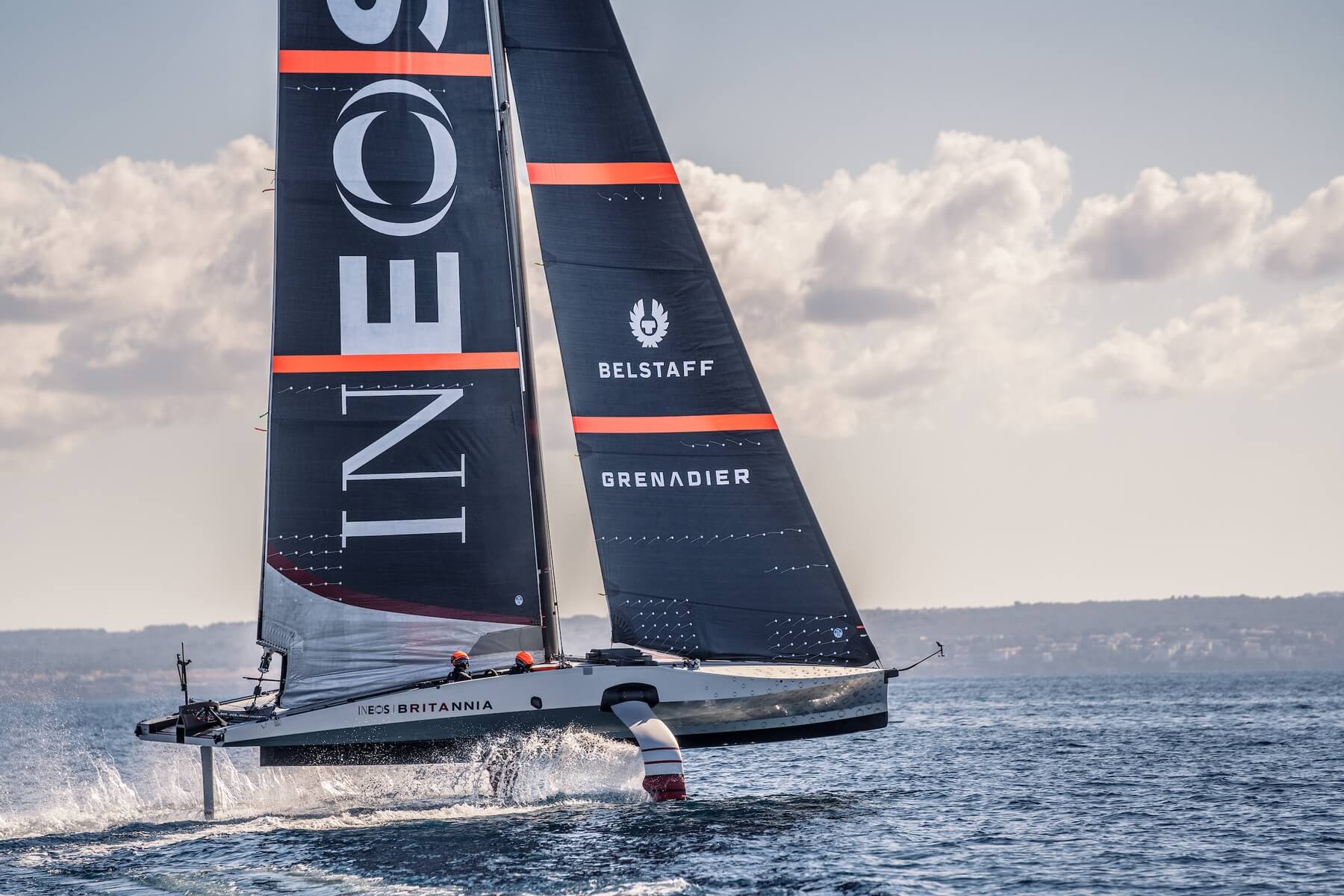
Making waves: the high-tech Britannia racing boats supported by chemicals maker Ineos use recycled carbon fibre from a pioneering company in the West Midlands
“Massive opportunities” to cut costs and waste for key industrial material
An innovative recycling process for carbon fibre, developed by a UK company, could unlock a new source of the
expensive “wonder material” – helping to accelerate the transition to an energy-efficient future.
Carbon fibre is both extremely light and strong, which gives it many potential applications, notably in products
designed to reduce energy consumption. But its high cost and global supply constraints have limited the use of
carbon fibre.
Gen 2 Carbon - the company that invented the process –
says a reliable and low-cost recycling method could provide fresh supplies by recovering the material from
discarded products that would normally be put into waste streams. Currently operating from a factory in Coseley
near Wolverhampton in the West Midlands, the company plans to open two overseas plants in Australia and the US
within the next two years.
The opportunities, says Frazer Barnes, Gen 2 Carbon’s chairman and main shareholder, are “massive”. He adds:
“Sustainability is becoming increasingly important [and] use of carbon fibre is growing due to the many
applications for the material especially in the light-weighting of vehicles needed to save energy costs and in
non-fossil fuel energy systems.
“While supply of virgin fibre is subject to limits, it makes sense for consumers of carbon fibre to consider
using more of the recycled form for specific applications, especially as the material comes with a cost
advantage.”
Carbon fibre became commercially available in the 1950s and is normally formed into a mesh or woven structure and
used to reinforce plastics. Big users include aerospace and high-performance car and wind turbine manufacturers,
as well as makers of sporting goods such as fishing rods. An aircraft made with carbon-fibre composite panels is
likely to weigh 20-40 per cent less than one using aluminium, creating a big saving in fuel costs over its life.
Gen 2 Carbon has emerged as a leader among a small group of businesses globally that feel they have solved most
of the technical problems in reclaiming carbon fibre from spent products. There could be big payoffs for the
industrial world from a fully worked-out recycling process.
In 2023 about 130,000 tonnes of carbon fibre is likely to be used globally, about twice as much as 10 years ago.
However, consumption is much lower than steel and aluminium, two of the biggest industrial materials for which
annual demand stands at about 1.5bn tonnes and 60m tonnes respectively. Only a small amount is currently
recovered, mainly in the form of manufacturing waste.
The work by Gen 2 Carbon underlines how efforts from sometimes little-known UK manufacturers have the potential
both to have a big impact on the wider economy and offer career opportunities for young people. Gen 2 Carbon
employs just 16 people though Barnes says the number should double by the end of 2023. A key remit for Made Here
Now is to highlight innovation in UK manufacturing likely to create economic growth and jobs.
Depending on how it is formed a carbon composite is 5-10 times stronger than the equivalent steel part. One
obvious drawback is that carbon fibre is typically 20 times more expensive than steel and 10 times more than
aluminium. However recycled carbon fibre might sell for 30 per cent less than the virgin form, while offering
comparable properties. This would create a big incentive for at least some users to consider this option.
Green Alliance, an environmental group, says: “A
successful recycling supply chain…would mean cheaper inputs for manufacturers, helping them to break into new
markets for applications where the material was previously too expensive and compete better on cost and
quality.” Others have pointed out how a successful recycling method could reduce the potential for a troublesome
waste problem. According to researchers at the University of Sydney, annual accumulation of carbon fibre-based waste
materials from the aircraft and wind turbine industries alone could reach 840,300 tonnes by 2050 if suitable
recycling methods are not adopted.
Big users of carbon fibre in sectors such as aerospace, marine and Formula One racing are monitoring developments
in carbon fibre recycling to work out the possibilities. A key part of the future business for Gen 2 Carbon
could be in the UK – which is Europe’s second biggest market for carbon fibre after France – even though 95 per
cent of the material it reclaims and sells is currently exported.
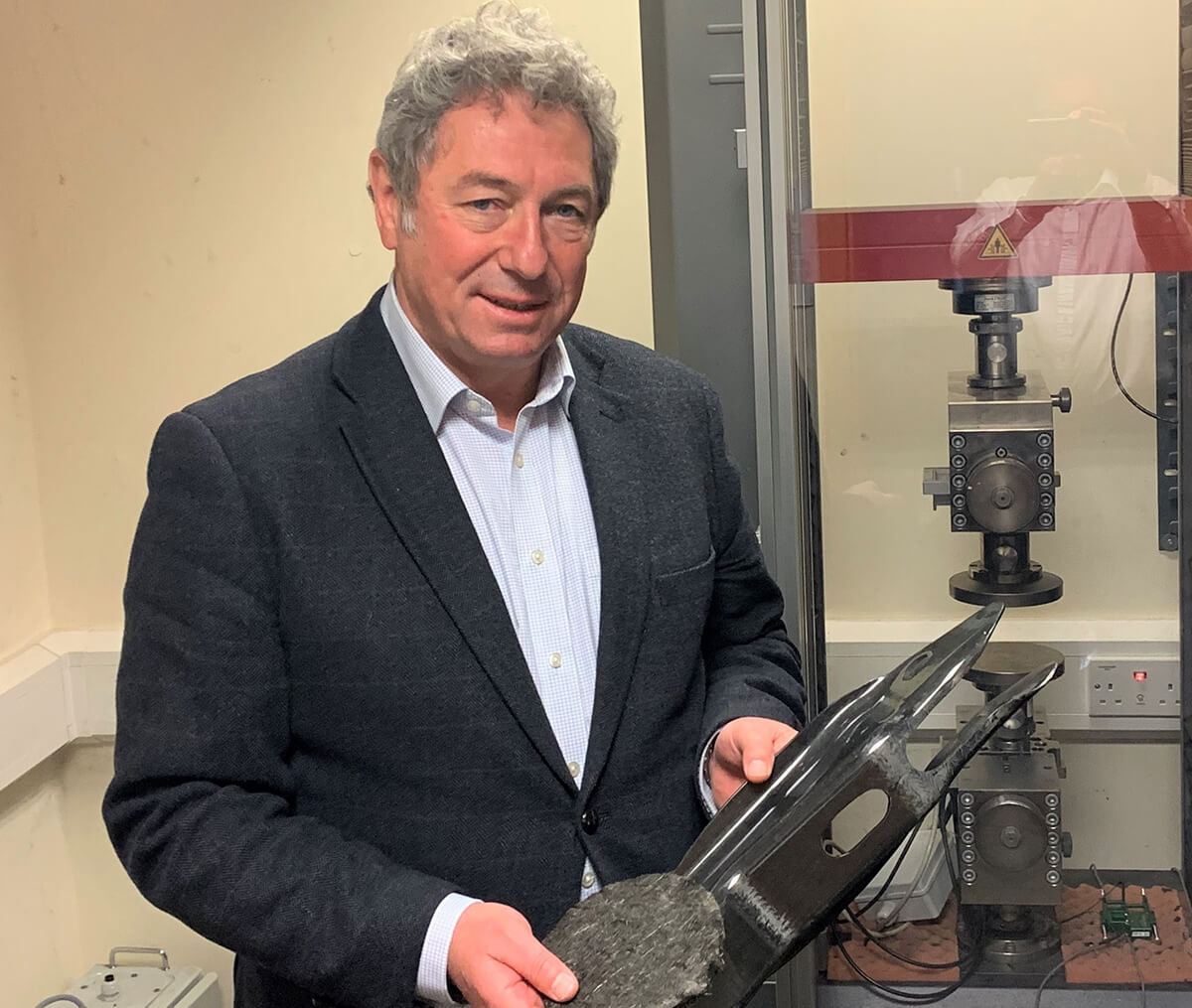 Frazer Barnes, Gen 2 Carbon’s chairman, points to big payoffs for the industrial world if efforts to step up use of recycled carbon fibre take root
Frazer Barnes, Gen 2 Carbon’s chairman, points to big payoffs for the industrial world if efforts to step up use of recycled carbon fibre take root
Barnes hopes that interest in his business’s technology in the UK can be energised, possibly with the
assistance of the UK government in boosting awareness of carbon fibre recycling.
“We would like to gain more UK customers. But awareness in the UK of the opportunities…is sadly limited. It
would help if the UK were to develop a proper strategy for new materials development [including recycling
opportunities] and how this will play a part in encouraging the industries we need. But I am sorry to say this
is something the government is a long way from devising.”
One prominent supporter of Gen 2 Carbon’s ideas is John McQuilliam, director of engineering at the composites
division of ProDrive, a Banbury-based motor sports and
technology business that supplies the automotive and aerospace industries.
“The recycled carbon material we get from Gen 2 Carbon can be incredibly useful in a range of applications,” he
says. “The material is close to isotopic [having the same characteristics in different directions] which means
in certain applications such as in car body panels it’s strong and resilient. One advantage over the virgin form
is that it can cost 30% less. We use the recycled form for a fairly high percentage of our total requirement.”
Another backer is Qu Li, a China-born automotive expert and driving force behind Morris Commercial, a UK-based company developing a
series of electric vans. The company has become a leading customer of Gen 2 Carbon. “Well above 50 per cent” of
the body panels in Morris Commercial’s vehicles are made from recycled carbon fibre from the Gen 2 Carbon
process, according to Li.
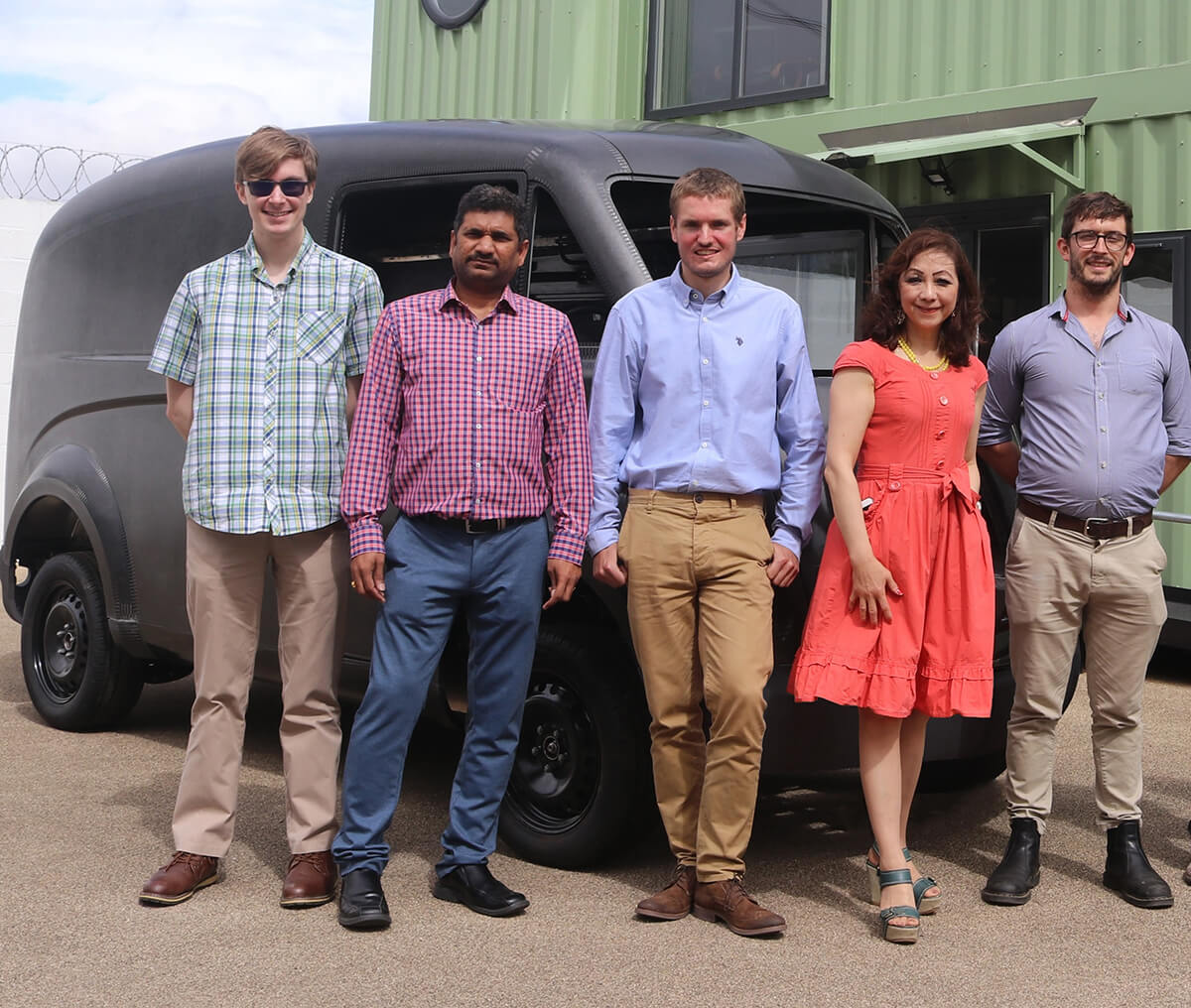 Qu Li - chief executive of van manufacturer Morris Commercial - says her company's partnership with Gen 2 Carbon has been "hugely beneficial"
Qu Li - chief executive of van manufacturer Morris Commercial - says her company's partnership with Gen 2 Carbon has been "hugely beneficial"
“We feel that using recycled material rather than virgin carbon fibre provides a highly useful environmental
benefit and should help us establish ourselves as a company operating in a sustainable manner,” she adds. “What
Gen 2 Carbon has been able to offer has been hugely beneficial.” While Morris Commercial is making vans only in
low volumes, it says it has secured significant new investment and is hoping to announce large scale production
plans soon.
Small amounts of recycled carbon fibre from Coseley have been used in the high-tech Britannia racing boats
supported by the Ineos chemicals company and which compete in the America’s cup, the yachting equivalent of
Formula 1.
In 2022 Gen 2 Carbon produced 600 tonnes of reclaimed carbon fibre from its Coseley factory. By the end of 2023,
it plans to move its UK operations to a new site nearby. By 2027, the company wants to have three recycling
plants globally with total output of 5,000 tonnes, giving annual revenues of up to £150m.
While carbon fibre was invented in the 19th century, it was only in the 1950s that large-scale production became
possible, thanks to technical advances. Much of the early work was done by the once-world-leading UK chemical
manufacturer Courtaulds. Now there are no significant UK producers. The main makers of the material include
Teijin, Mitsubishi Chemical and Toray /Zoltek of Japan, DowAksa (US/Turkey), SGL Carbon (Germany), and the US’s
Hexcel.
Gen 2 Carbon has spent 20 years – under a variety of names and with different financial backers – developing its
technology. Barnes became a shareholder in 2021, when the company adopted its current name. Over the past five
years, including investments by the previous owners, Barnes says Gen 2 Carbon has spent £10m developing its
technology.
It aims to raise another £8m in the coming year to move ahead with its plans. Other companies globally with
carbon fibre recycling facilities – all operating on a small scale – include Mitsubishi Chemical Advanced
Materials of Japan and the US companies Carbon Conversations and Vartega.
UK efforts to develop a way to recycle carbon fibre go back to the early 2000s and a business called Milled
Carbon.
John Davidson, a veteran carbon fibre engineer, joined Milled Carbon as managing director in 2002. He stayed
until 2009 after which the operations were transferred to a new company, ELG Haniel, backed by Mitsubishi
Corporation of Japan and Haniel, a diversified German firm.
In 2021, the company’s main carbon fibre recycling operations were sold to a new company that took the name Gen 2
Carbon – which is now seeking to establish itself as a leader in this technology.
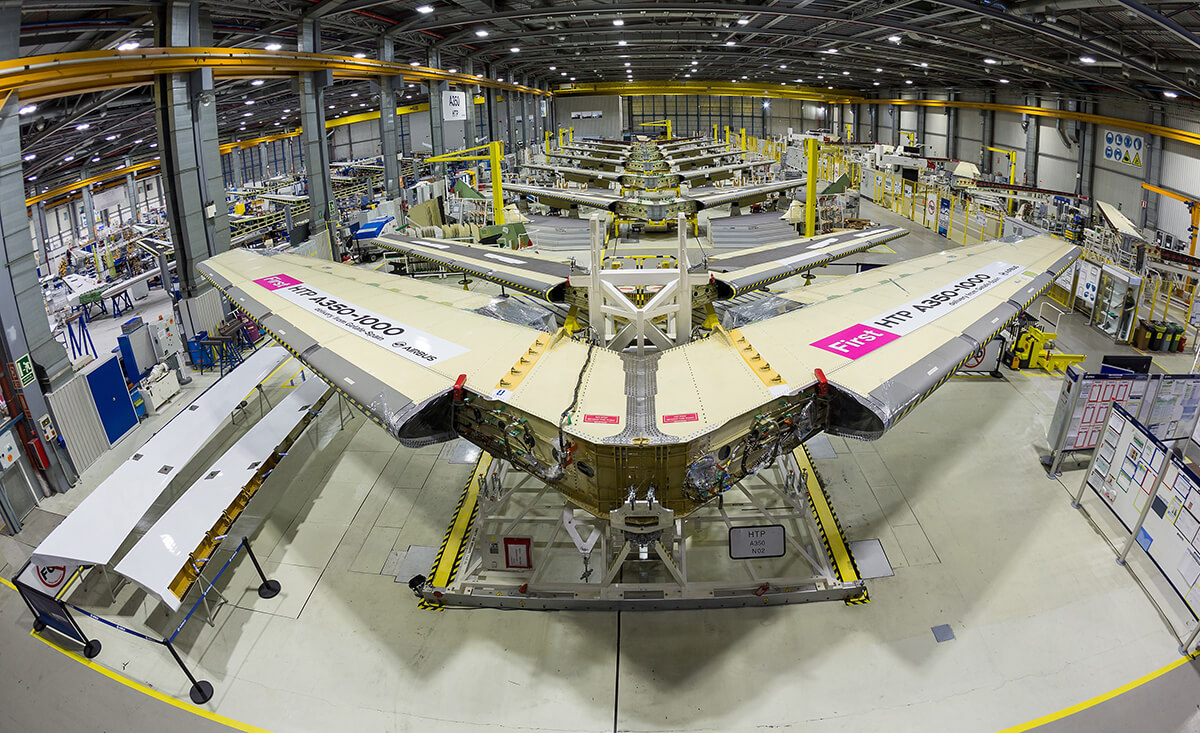 Parts of the tail sections of Airbus A350 airliners - being assembled here in a factory near Madrid - rely on carbon fibre to help reduce weight and fuel consumption. Photo: Pablo Cabellos
Parts of the tail sections of Airbus A350 airliners - being assembled here in a factory near Madrid - rely on carbon fibre to help reduce weight and fuel consumption. Photo: Pablo Cabellos
Davidson – now a director at Cygnet Texkimp, a
machinery manufacturer – applauds the progress Gen 2 Carbon has made and is optimistic about the prospects for
recycled carbon fibre. He says the reclaimed material “can have as good, sometimes better, composite properties
than virgin material”, and is much cheaper.
But Davidson says product designers have to show caution. “While the virgin form would normally be preferred for
the main [load-bearing] struts of cars or aircraft, the recycled material can be used for body parts or panels
for cars and other components, which need to be fairly thick or bulky but do not need to withstand large
stresses." He adds: "One of the biggest hurdles to overcome is to…educate the composites industry about suitable
uses [for recycled carbon fibre].”
Attempts to recycle carbon fibre have been dogged by difficulty. One problem has been to ensure the fibre – once
it has been separated from the resin in which it is embedded – emerges in a sufficiently pure state for further
use. Efficient ways must also be found to form the reclaimed substance into a mat or lattice that can be used in
a new composite.
Gen 2 Carbon thinks it has cracked the problems with a series of tweaks to existing ideas on recycling - based
around burning off the resin from the composites in furnaces and then using machines to line up the fibres in
the correct way. Its approach uses some modern technology combined with centuries-old ideas.
Carbon-fibre composite in a variety of forms provides the raw material for Gen 2 Carbon’s plant in Coseley,
including pieces of used products (such as parts of wind turbine blades or boat hulls), so-called prepeg (resin
plus fibre in an uncured form) and waste mesh or laminate from manufacturing processes.
 High-performance cars such as this McLaren vehicle are big users of carbon fibre
High-performance cars such as this McLaren vehicle are big users of carbon fibre
The input material first goes through mechanical shredders before being heated in a specialist furnace. This
burns off the resin in the composite that is responsible for most of its weight, and makes it possible to
separate out the fibre.
In developing the heating part of the process the company has been helped by a partnership with engineers from
the Birmingham Energy
Institute at the University of Birmingham. Some of this work has entailed working with specialised
sensors to control the technology. Gen 2 Carbon has also collaborated on the furnace design with an unnamed
European furnace maker.
The fibres emerging from the furnace stage come out in relatively short lengths, arranged randomly. These then
must be repositioned so they end up as a mesh or lattice of specific dimensions that can later be used in a
newly formed composite. This is where a process called “carding” enters the picture.
Carding machines were used early in the mechanisation of the textile industry in Europe, during the late 18th and
early 19th centuries. Wool or cotton in tangled arrays was passed through many small needles inside the machines
that acted as combs, aligning the textile fragments into strands than can later be turned into yarn.
The equipment used in Coseley is a heavily modified carding machine built in the 1980s for use in the textiles
industry, which Gen 2 Carbon bought second-hand. A new version purchased from a machine maker in Italy or
Germany would cost some £4m.
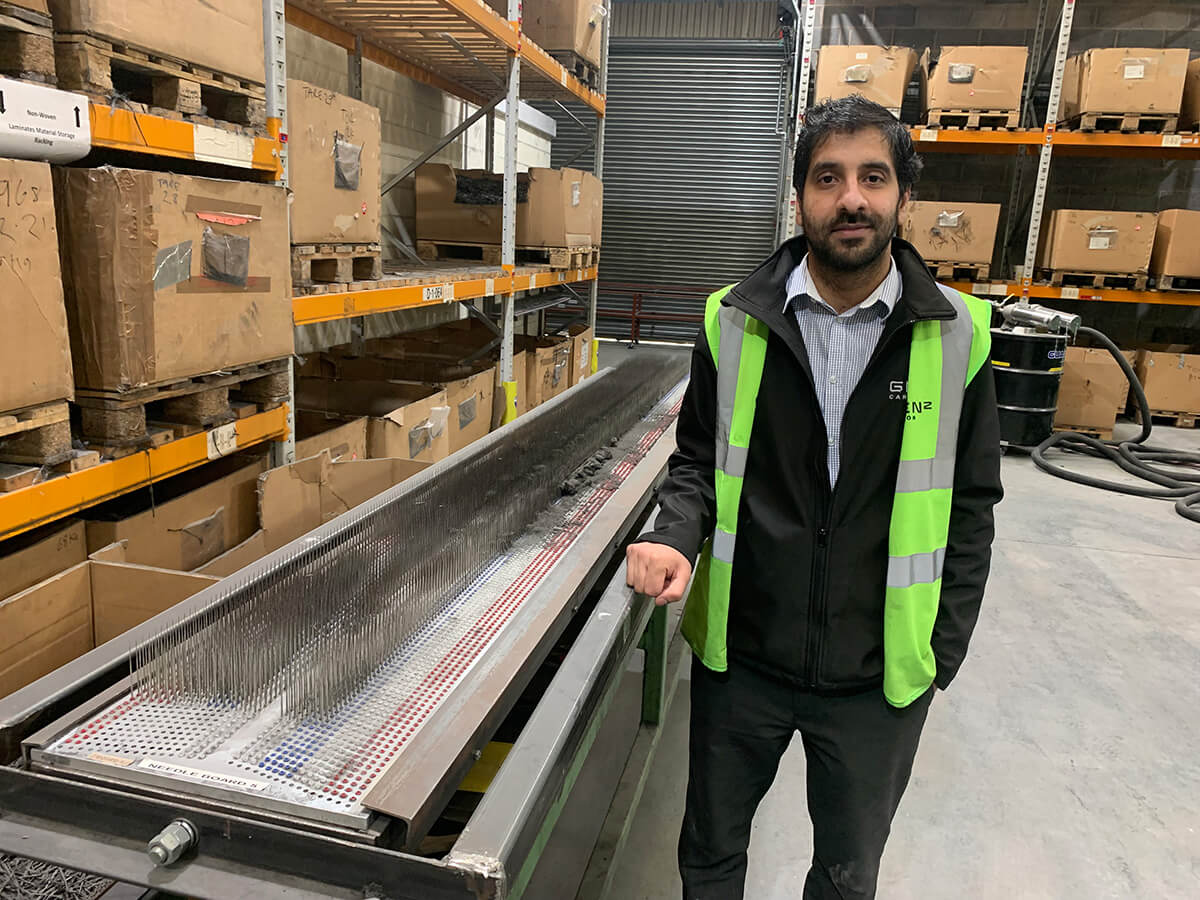 Mohammed Riaz of Gen 2 Carbon with the needle bed in the Coseley factory that is a key part of the recycling process
Mohammed Riaz of Gen 2 Carbon with the needle bed in the Coseley factory that is a key part of the recycling process
Carding with carbon fibre is, says Mohammed Riaz, Gen 2 Carbon’s technical director, a lot harder than with
cotton or wool. “You could not just buy a carding machine for our application and expect it to work straight
away,” he says. “Our technology edge comes from the ingenuity we have used over several years to make the
adaptations needed to make the machine work in the way we need.”
One key detail concerns the system of carding needles that ensure the fibres are lined up in the correct way to
form a mesh for a desired application. As many as 5,000 needles are needed in the carding system to make the
process work efficiently. Gen 2 Carbon has a stock of 20,000 of these needles, many shaped slightly differently.
The needles are arranged in an intricate looking “needle bed” where the arrangement of each component (and their
specific shape) must be decided in advance depending on what the finished mesh will be used for.
“The alignment of the fibre in the mat and its density is dependent on the arrangement of the needles,” Riaz
says. “We can create a range of different types of mat to suit the requirement of the purchaser. So a non-woven
mat we are making that will end up, say, in a car panel will probably have a different fibre structure to a mat
that looks similar but where the end user is a wind turbine maker.”
Creating a new needle bed in this customised manner is a process that has so far resisted automation efforts.
Typically it takes a team of three people two days to do this job for a new application.
In the UK, big users of carbon fibre include large aerospace groups such as Collins, Spirit AeroSystems and
United Technologies of the US and the UK’s BAE Systems and Rolls-Royce. Others include racing car makers such as
McLaren, boat builders and less well-known businesses making parts or “intermediates” (including prepeg) that
will eventually become part of composites. Included in this last group are Carr Reinforcements, Fothergill
Engineered Fabrics, SHD Composite Materials, Sigmatex and Composites Evolution.
